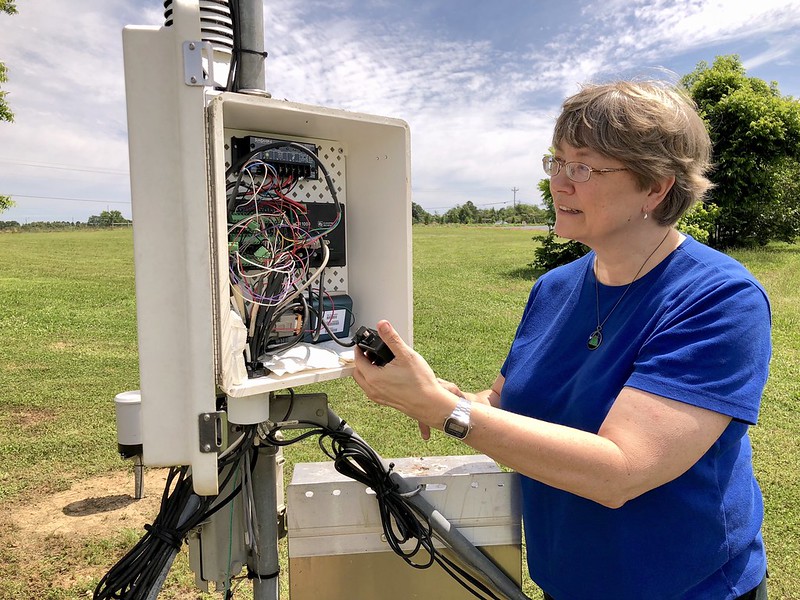
Jan 20, 2022Average temperatures not met in Georgia in 2021; precipitation up
In 2021, Georgia experienced its coldest year since 2014, with an average temperature of 64.5˚ F. But the temperature was still well above the long-term average of 63.4˚ F and ranked the 20th warmest year overall since statewide records began in 1895.
The warmth was spread uniformly across the state, with no areas of unusually warm or cold conditions.
Lower temperatures than recent years
The year started off warmer than normal, with temperatures above average in January through March. This was despite the major outbreak of cold air that occurred in the central U.S. in February, bringing devastating freezing conditions to Texas and surrounding areas. This pattern reversed in April, and the months of April through July were all cooler than the long-term average. This resulted in a slow start to the growing season, and many crops were behind their normal development until later in the summer due to the cold temperatures and lack of sunshine caused by persistent cloudiness. The April through September period was the 27th coldest on record – the last time it was this cold was 2013.
The cold April temperatures were due in part to outbreaks of frigid air that caused frost in many parts of the state. The frost caused by the cold air destroyed blooms on fruit crops, resulting in significant losses to farmers in some counties, especially after blossoms developed early in the season due to the warm conditions early in the year.
At the end of the year, November was much cooler than normal and had no severe weather or hurricanes, but December was almost ten degrees warmer than the long-term average. Many counties in the southern part of Georgia did not experience a killing frost by the end of 2021, which happens in fewer than one out of ten years.
Wet with significant crop impacts
Precipitation for the state as a whole was 57.06 inches, just about 7 inches higher than the long-term average from 1895 to 2021. It was ranked the 21st wettest year on record.
Rainfall in the months of January through May was very close to average in each month, but in the period from June through October, it was at least an inch wetter than average for each month. This resulted in wet fields that were difficult to enter, which caused significant crop impacts from fungal diseases and cloudiness caused by the warm and humid conditions.
The wet conditions were not spread equally around Georgia. The wettest parts of the state were the Coastal Plain region and the far northwest corner of the state. The driest area was between Atlanta and Macon in the central part of the state. Wet conditions were especially noticeable in southern Georgia early in the year and during the main months of the growing season, affecting agriculture as noted above.
Because of the plentiful rainfall, drought made only a minor appearance in 2021. Following a very dry November, moderate drought was introduced to east central Georgia on Dec. 7, but it was removed two weeks later on Dec. 21. Some scattered abnormally dry conditions also occurred earlier in the year, but all were gone by the summer growing period.
Claudette, Danny, Elsa, Fred, Mindy – and Hurricane Ida
Georgia was directly affected by five tropical storms in 2021. They include Claudette (June 19-21), Danny (June 28-29), Elsa (July 7-8), Fred (Aug. 16-18), and Mindy (Sept. 8-9).
All these storms contributed to the rainfall received over the summer. Additional rainfall came from Hurricane Ida, which made landfall west of Georgia along the Louisiana coast and brought heavy bands of rain across Georgia.
Severe weather occurred during every month except for November, which saw cold and quiet conditions.
To keep up with Southeast climate news from Georgia’s agricultural climatologist, visit site.extension.uga.edu/climate.







